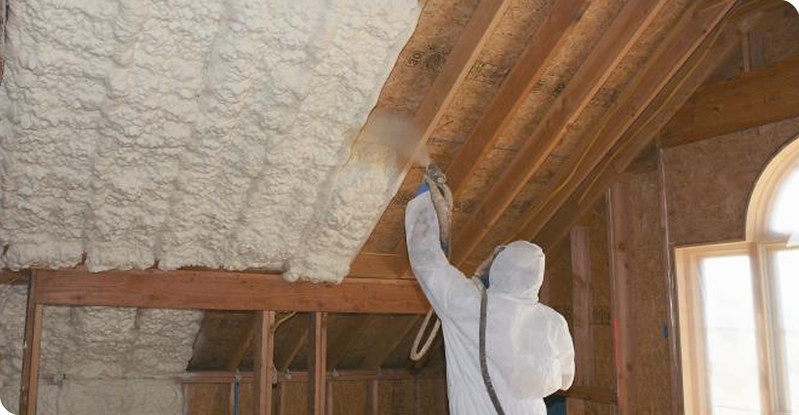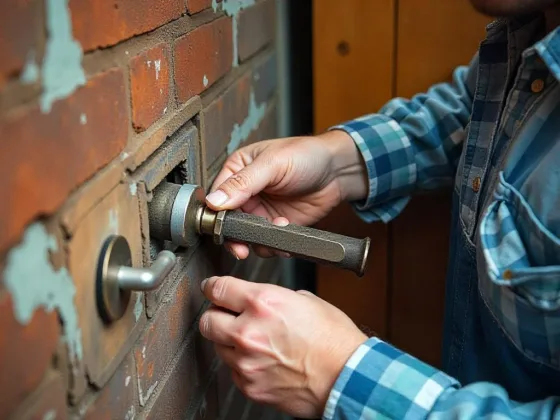Table of Contents Show
Insulation is an important part of home improvement that makes a home more comfortable and reduces energy consumption.
Your attic is one of the parts of your home that is most exposed to extreme weather conditions during the winter and summer.

Whether you use it as a storage or living space, getting better protection for the upstairs area under your roof is advisable.
Blown-In Insulation is one of the most popular attic insulation methods for homeowners looking to make some improvements.
This article will highlight some important facts about blown-in insulation. Read on to find out if it’s is the best choice for your home.
What is Blown-in Insulation
Blown insulation – also called loose-fill insulation – is a method that applies insulation materials to small spaces like wall cavities, attics, and floors without excessively cutting into your home’s structure.
Blown insulation is mostly used in easily accessible areas, unlike rolled insulation and batt insulation.
It is a top competitor because it offers a quick setting and improved performance. Applying techniques for blown-in insulation vary depending on the material used.
Types of Blown-in Insulation
The main blown-in insulation types are fiberglass, cellulose, and spray-in foam. These insulation methods have different applying techniques and accompanying advantages and disadvantages depending on where they are applied and the time of year.
Loose-fill fiberglass is resistant to mildew, moisture, and fungus, but it loses about half its effectiveness in cold temperatures.
It is manufactured from glass heated to a liquid and spun into thin fibers. These fibers are blown into attics to provide an average R-2.5 thermal value per inch.
The higher the thermal value the more the insulating effect. With a thickness of 7.5 inches, you reach the insulating effect of a batt of R-19 insulation. The average cost for a bag of loose-fill fiberglass is $35. The bag can insulate at R-19 for a 106.6 square-foot area.
There are 3 different kinds of loose-fill cellulose and it is ideal for high summer temperatures because of its fire-retardant treatment.
Cellulose is an ideal choice for homeowners who strive to be environmentally friendly since it is made from recycled cardboard and newspapers. It has an average thermal value of R-3.7.
The average cost for a bag of cellulose is $11.50. One bag can cover 36.7 square feet, providing five-inch insulation and a thermal R-value of R-19.
Loose-fill cellulose is cheap and good for the environment. Its major disadvantage is that if cellulose gets wet (e.g., from a leaky piper or roof) it loses its fluffiness and becomes compacted and soggy.
Wet cellulose has a much lower R-value than that in its original condition. Spray-in foam provides the highest R-value of all three options because it extends to fill empty spaces and voids after its application, thus reducing air infiltration.
Rock wool (commonly called mineral) is the most expensive kind of blown-in insulation. It has a thermal value of R-3.3 per inch. A single bag will cost you $140 and only cover 60 square feet with a thermal value of R-19
Read Also:
Advantages of Blown-in Insulation
Blown-in insulation offers quite a few benefits. It saves a lot of energy during the winter and summer months and greatly reduces your energy bills.
The insulation reduces the heat entering and leaving your home during summer and winter, thus reducing your heating and air conditioning bills.
Blown-in insulation also blocks sound and prevents noise from entering or exiting your household. You will not have to worry about the neighbors making a noise complaint.
Blown-in insulation is environmentally friendly and contains recycled materials. Further, it is quick and efficient since it does not require invasive installment procedures compared to other types of insulation.
Disadvantages of Blown-in Insulation
When installing blown-in insulation, you will have to drill a hole at the top of the stud space for the material to be blown in through long flexible hoses, which are then sealed with a plug.
The plugs are usually noticeable even when they closely match the siding color.
The second disadvantage is that any obstructions in the wall, e.g., drainpipes, may prevent the insulation from filling the stud.
Recommended R-Value
When choosing blown insulation, you should consider the recommended R-value in your region.
The R-Value indicates an insulation sample’s capability to reduce the rate of heat flow in specified test conditions.
The Department of Energy issues different R-values for areas like attics, floors, and walls. Getting the right R-value ensures that your insulation material is as efficient as possible.









